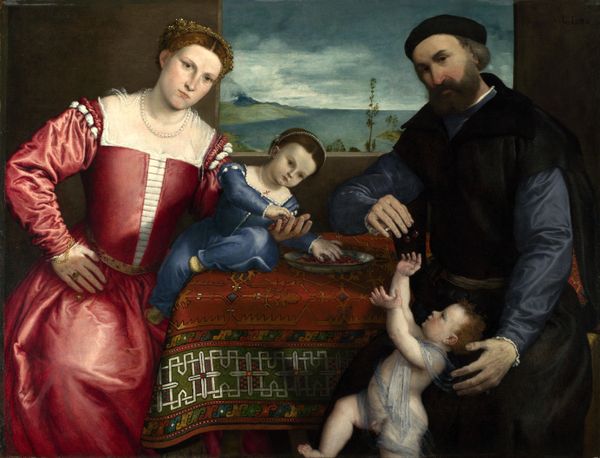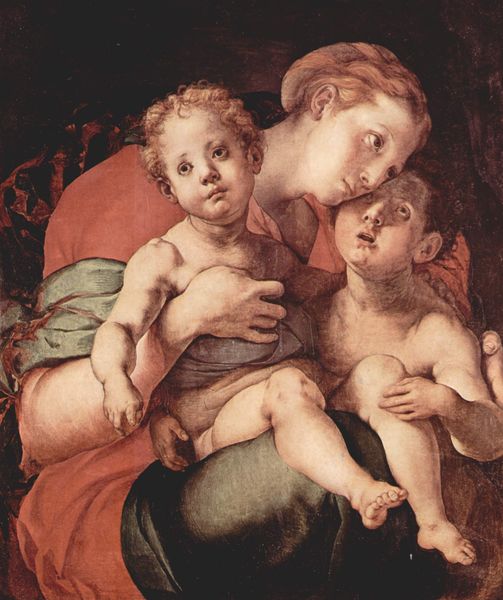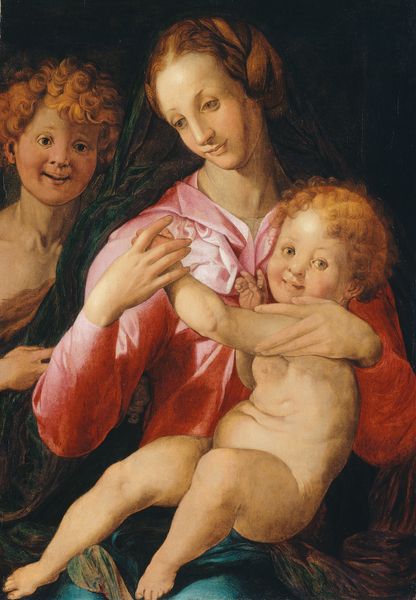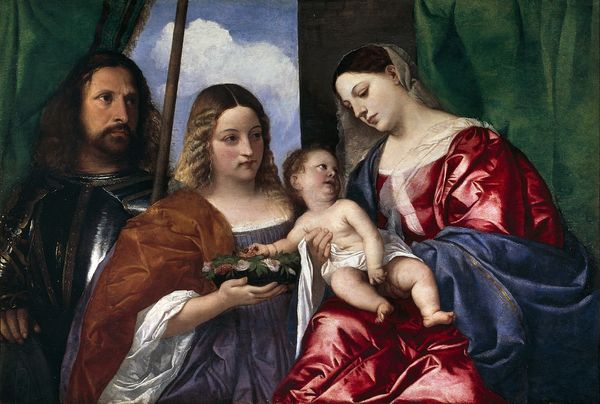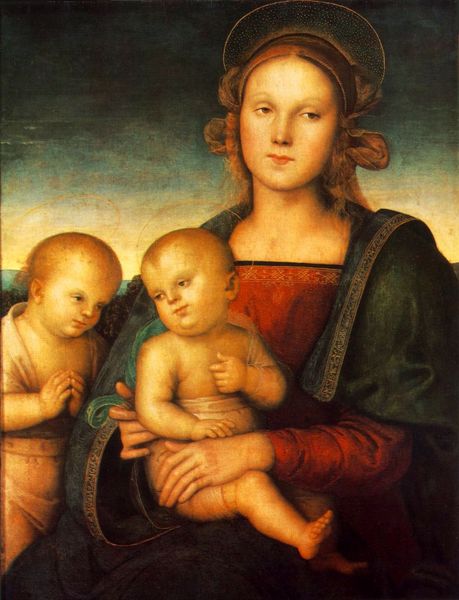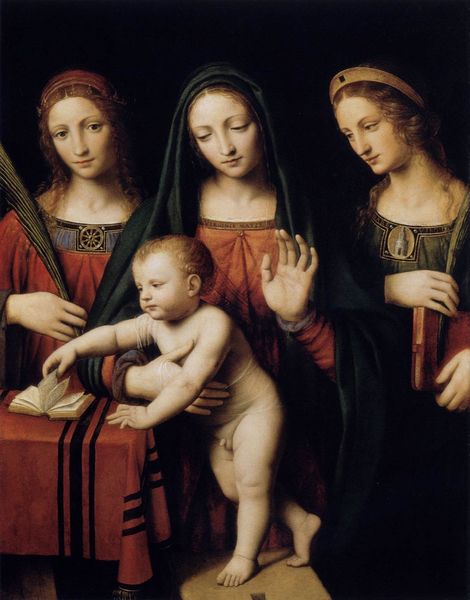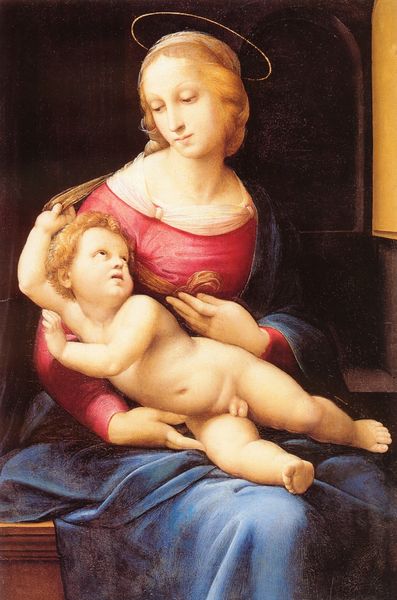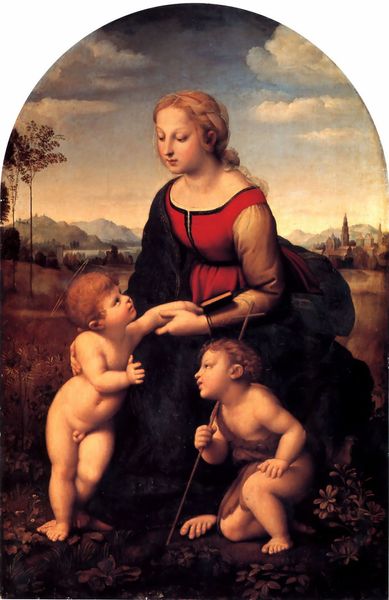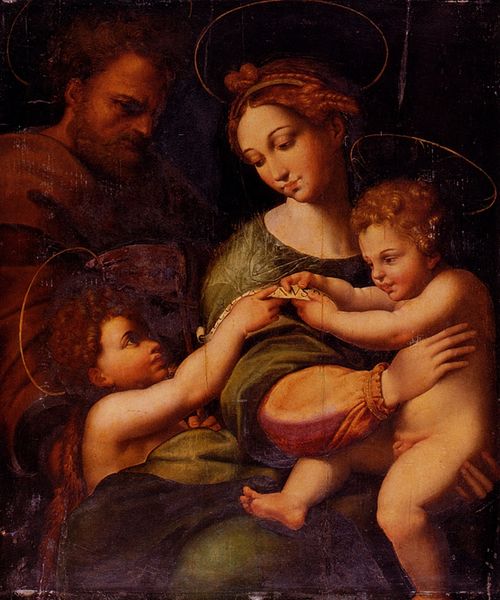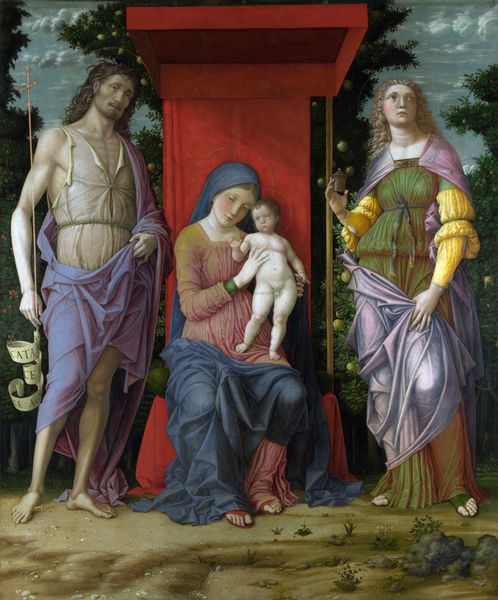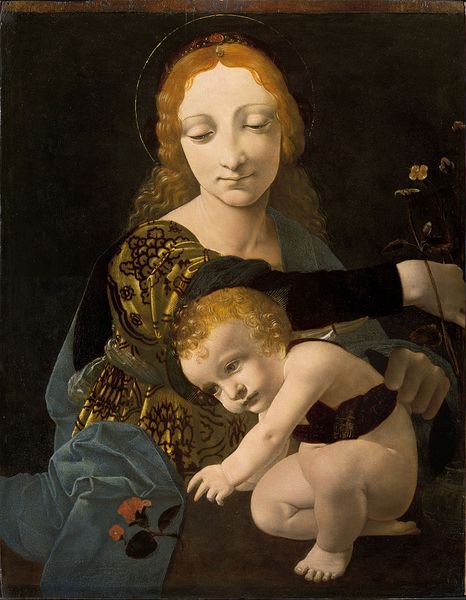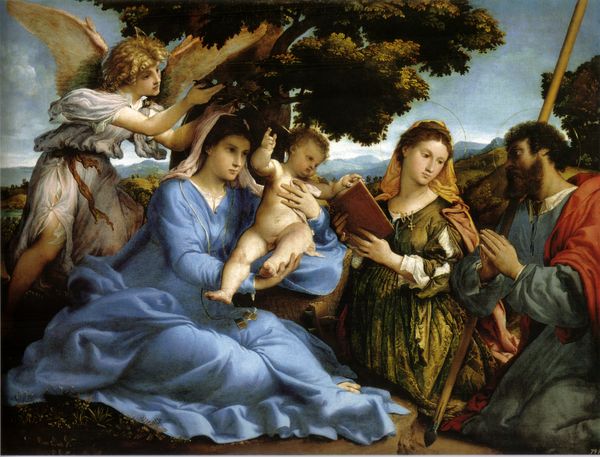
Signor Marsilio Cassotti and his Wife, Faustina 1523
0:00
0:00
lorenzolotto
Museo del Prado, Madrid, Spain
oil-paint
#
portrait
#
oil-paint
#
mannerism
#
11_renaissance
#
oil painting
#
genre-painting
#
italian-renaissance
Dimensions: 84 x 71 cm
Copyright: Public domain
Curator: Ah, here we are, standing before Lorenzo Lotto’s "Signor Marsilio Cassotti and his Wife, Faustina," completed around 1523. It's an oil on canvas, currently residing in the Museo del Prado. Editor: My first impression? It's intensely intimate. The dark background and the couple's clasped hands draw me right into their shared world, which is a little spooky. Curator: Indeed. It's quite compelling in that regard. One might read their clasped hands within the context of the Renaissance's evolving social constructs and its nascent humanism. The bond between husband and wife begins to emerge, however tentatively, as worthy of artistic consideration. Editor: And there's this slightly menacing cherub hovering above, stuffing laurel wreaths into the couple's heads... like some sort of forced celebration! Is it Cupid gone rogue? I can't say it seems filled with joy or anything positive, really. I can’t put my finger on it but I sense unease. Curator: I find your reaction very insightful. Considering that Lotto created this during the Italian Renaissance, we must examine the themes that prevail from a cultural point of view. Laurel wreaths were commonly symbols of glory, but here, considering also their stiff poses and relatively sombre faces, that cherub reads perhaps ironically. The era's prescribed roles for women and the pressures on aristocratic families to maintain appearances are, shall we say, also very interesting when read with an updated feminist lens. Editor: You know, there's something so stagey about this picture, too. It almost feels as if they've been interrupted, perhaps, or even ambushed into some sort of role. Like an engagement picture where someone's got to agree right away! But there's nothing organic about any of their expression! Curator: This speaks volumes to how gender roles, patriarchy and familial responsibilities operated during the Renaissance era. You feel it too! Considering that context, this isn't just a double portrait. It becomes a layered representation, a subtle commentary. It presents many avenues for us to examine critically what marital life implied. Editor: Well, seeing it through that lens, now it speaks even more. The picture turns into something that really transcends itself, more like a symbol! Now I'll see it entirely differently. Thank you for providing new points of view, I will meditate about it.
Comments
No comments
Be the first to comment and join the conversation on the ultimate creative platform.
